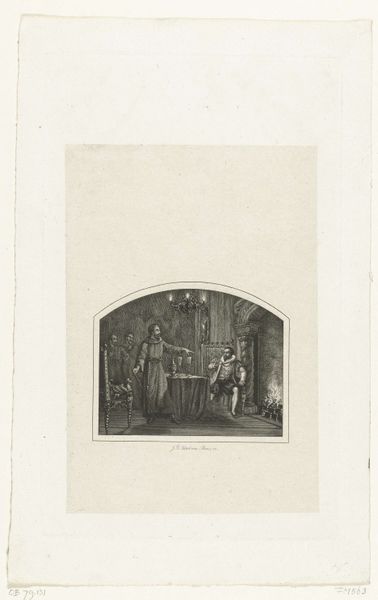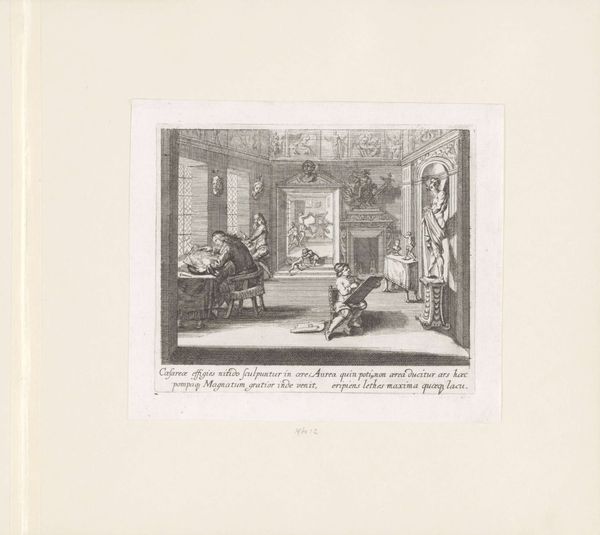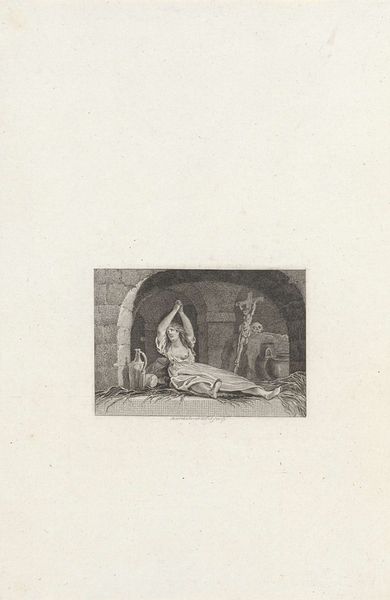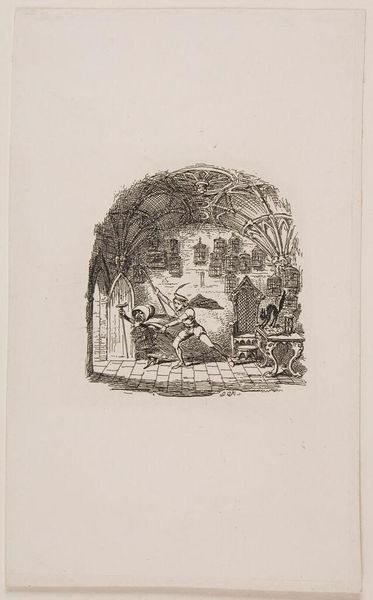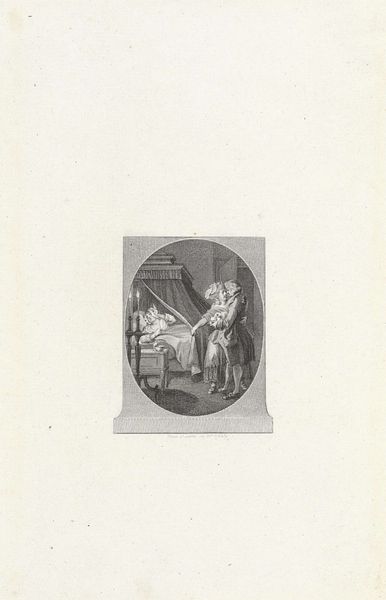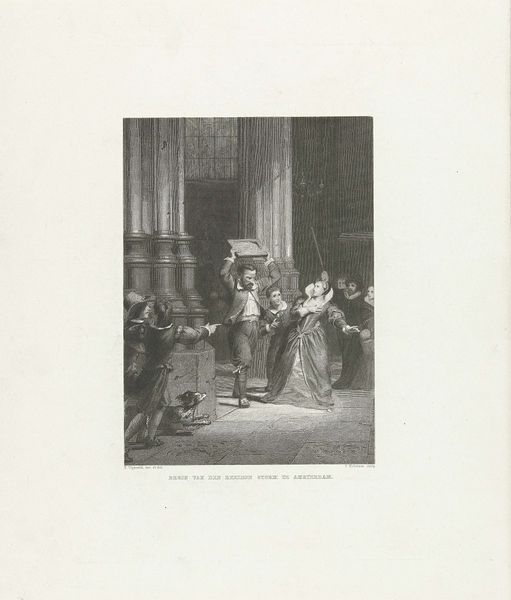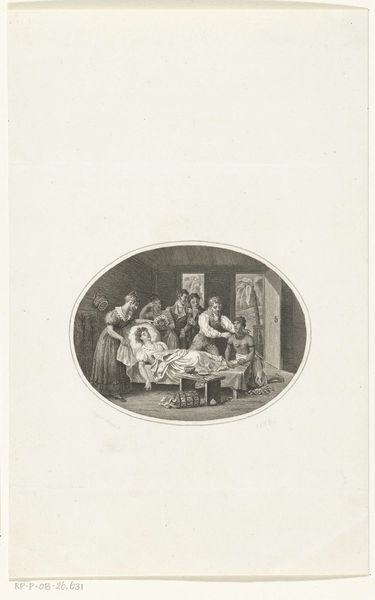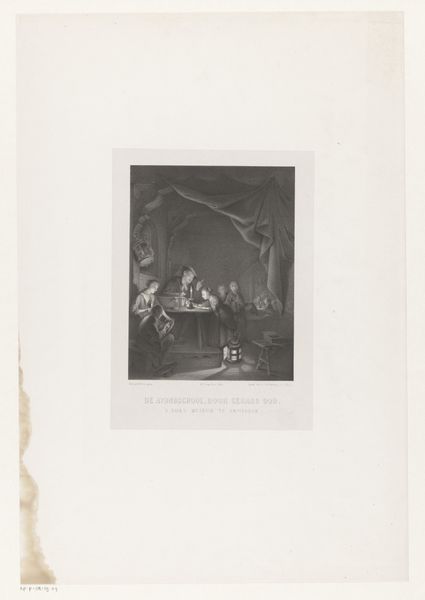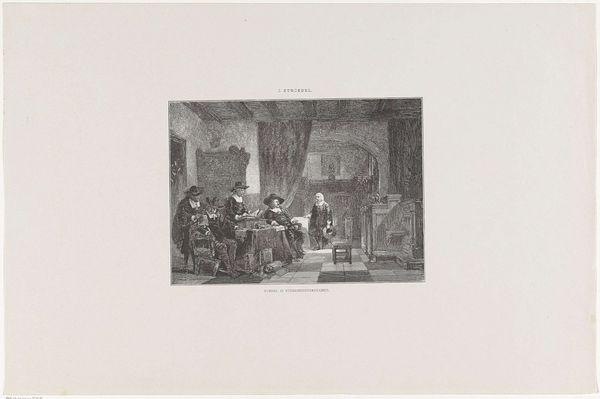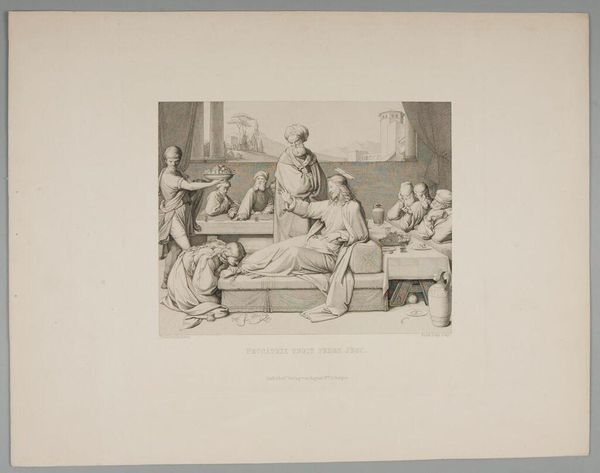
print, etching
#
portrait
#
pencil drawn
#
light pencil work
#
narrative-art
# print
#
etching
#
pencil sketch
#
old engraving style
#
figuration
#
romanticism
#
sketchbook drawing
#
pencil work
#
history-painting
Dimensions: height 175 mm, width 217 mm
Copyright: Rijks Museum: Open Domain
Théodore Géricault created this lithograph, "Willem de Veroveraar opgebaard in de kerk van Boscherville," using ink on paper. The lithographic process is key here. Unlike etching or engraving, where lines are incised into a metal plate, lithography relies on the repellant relationship between grease and water. The artist draws on a flat stone surface with a greasy crayon, then treats the stone so that ink adheres only to the drawn areas. This printmaking technique allowed for a more direct, painterly approach, capturing the somber scene with nuanced tonal variations. Look closely at the texture – the soft gradations of light and shadow, the delicate rendering of the figures. These effects are achieved through the skillful manipulation of the lithographic crayon. Lithography democratized image-making in the 19th century, making art more accessible. The artistry lies not just in the composition, but in the deft handling of the materials and the embrace of a relatively new technology.
Comments
No comments
Be the first to comment and join the conversation on the ultimate creative platform.


